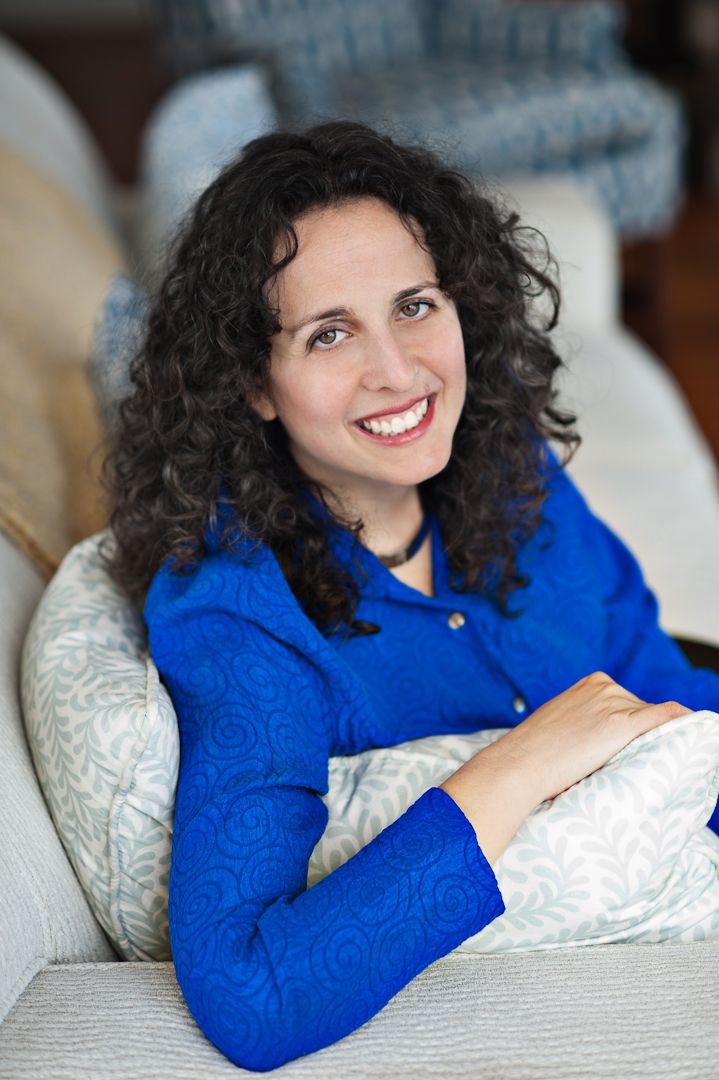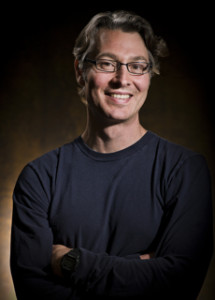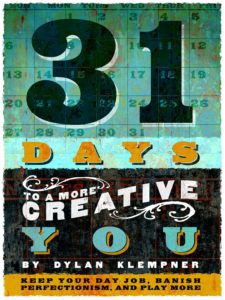 I love my work as a book writing and publishing coach. Inevitably I meet people who are up to such interesting things–so I’m always learning from them. Sometimes, what they have to teach is particularly relevant to someone writing a book, as is the case with Dylan Klempner who is an artist in residence at Shands Hospital’s Arts in Medicine Program and has just launched the program 31 Days to a More Creative You.
I love my work as a book writing and publishing coach. Inevitably I meet people who are up to such interesting things–so I’m always learning from them. Sometimes, what they have to teach is particularly relevant to someone writing a book, as is the case with Dylan Klempner who is an artist in residence at Shands Hospital’s Arts in Medicine Program and has just launched the program 31 Days to a More Creative You.Here I interview Dylan more about the benefits of creativity–for anyone and for writers, in particular. Dylan shares his expertise, insights and tips.
Lisa: Let’s start with health, since that’s such a big part of what you do, Dylan. What are some of the health benefits of creativity?
Dylan: Studies show that being creative helps us relax. Writing, painting, dancing and singing are excellent stress busters. But the health benefits of creativity and art making go well beyond dealing with the effects of stress. I work at a university affiliated hospital where the arts are used as a companion therapy in just about any illness you can think of.
 Lisa: What are some specific benefits?
Lisa: What are some specific benefits? Dylan: The arts reduce pain levels. Playing and listening to music, for example, is a powerful way to control pain. Dance is used successfully in our hospital to help Parkinson’s patients maintain mobility. Writing and painting can help you make meaning out of crisis. Viewing visual art is also a powerful tool for disease prevention. It can also soothe and restore us.
Lisa: What are some of your creative practices?
Dylan: Art is a primary way I connect with other people, so I practice a variety of art forms that help me do that. I’m mainly a writer, but I also paint, take photographs, and play drums.
Lisa: How have your other creative practices affected or enhanced your writing?
Dylan: Creativity is a like a muscle that grows with exercise. I try to follow the invitation I give others, which is to make art for 15 minutes per day. If you can’t do 15 minutes, do 5. If you can’t do 5, do 1. The process of making art every day has had a powerful impact on my ability to bring creativity into other areas of my life–like writing–when I need it most.
Lisa: That’s a wonderful way to put it and I couldn’t agree more about creativity being a muscle. Can you share a creativity enhancing exercise that works especially well for writers?
Dylan: I always recommend journaling. Maintain a steady flow of words. Keep your hand moving across the page, your fingers across the keyboard. I often use journaling to warm-up or cool-down during prolonged writing sessions.
Lisa: Can you give us one more creativity tip for writers?
Dylan: When you think you’ve run out of ideas, describe images that relate to the project you’re working on. This process works whether you’re writing a how-to book, a novel or an office memo. For a piece of fiction, describe the scene or your character’s physical appearance in great detail. For nonfiction, recall what’s most important about the message you’re trying to deliver. You’ll have to edit out what’s not relevant later, of course. The goal is to become as intimate with your topics as you can. That’s how you learn how to say what you want to say.
Lisa: Tell us a little about 31 Days to a More Creative You as well as the free e- course you just launched.
course you just launched.
 course you just launched.
course you just launched.Dylan: The e-course is designed to help you access your expressive voice and overcome creative blocks. In 31 Days to a More Creative You, you receive a month-long program of creativity-building activities. You will paint, write poetry, dance, sing, and more. I also show you how to enjoy the creative work of others. I help you find new music tailored to your individual tastes and offer tips to make your next visit to an art gallery or museum more enjoyable. The free course is a mini-version of it.
Lisa: I can see how this could help writers just tap into their creativity more and free up their writing. Why did you create the program? Was it personal?
Dylan: Two reasons: First, I wanted to give people simple art making instructions because I know how essential the arts are to our well being. I also wanted to honor the outstanding teachers I’ve had the privilege to work with over the past several years. I wanted to “pay forward” their wisdom and advice. In the process, I’m learning a tremendous amount from my students about art’s capacity to help us heal, cope with difficult circumstances, and express ourselves. So the project has had this unintended reciprocal effect.
Lisa: What benefits might writers expect to get from your course (both as writers and in general)?
Dylan: If I’ve learned anything since I began taking myself seriously as a writer about twenty years ago, it’s that there’s more to writing than writing. What I mean is, you can write all day without saying anything important to you or anyone else. But that’s unfulfilling. I’m not talking about inspiration–which I actually think is a by-product of simply showing up again and again to do the work and asking big questions. Writers need to figure out what they want to say, then find the means to say it.
Lisa: How do you feel writers can “figure out what they want to say”?
Dylan: We do that by developing skills that nourish our writing lives. We need to learn to see, to be present and in our bodies, and to use language. Making art with media besides pen, paper, and word processor, helps us exercise our creative muscles–like cross-training for an athlete.
Lisa: Readers, I encourage you to sign up for Dylan’s FREE e-course–the first three days of 31 Days to a More Creative You.
Dylan Klempner is the author of 31 Days to a More Creative You. He believes that creative play is an essential part of our well-being. His work provides quick, simple, and fun activities that add joy and significance to your days. Dylan’s creativity advice and artist profiles have appeared in publications across the country. He is an artist-in-residence in the Arts In Medicine program at the University of Florida’s Shands Hospital, and co-edits the non-fiction literary e-zine, BraidedBrook.com. Dylan enjoys oil painting, drums, and discovering new art forms as much as he enjoys working with others to maximize their creative potential.
Please share any questions for Dylan or your own insights about creativity as a comment below!

